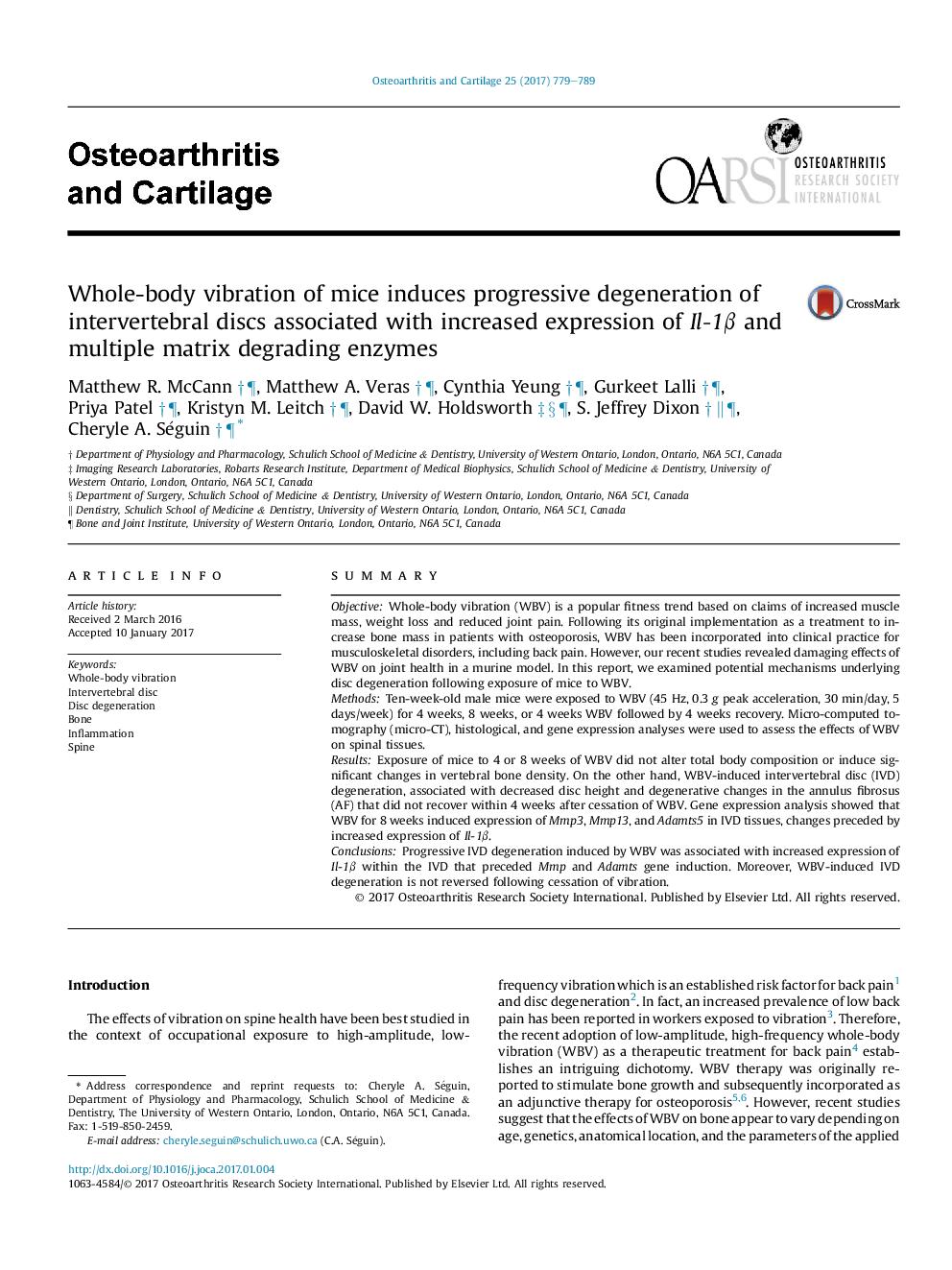| Article ID | Journal | Published Year | Pages | File Type |
|---|---|---|---|---|
| 5669444 | Osteoarthritis and Cartilage | 2017 | 11 Pages |
SummaryObjectiveWhole-body vibration (WBV) is a popular fitness trend based on claims of increased muscle mass, weight loss and reduced joint pain. Following its original implementation as a treatment to increase bone mass in patients with osteoporosis, WBV has been incorporated into clinical practice for musculoskeletal disorders, including back pain. However, our recent studies revealed damaging effects of WBV on joint health in a murine model. In this report, we examined potential mechanisms underlying disc degeneration following exposure of mice to WBV.MethodsTen-week-old male mice were exposed to WBV (45 Hz, 0.3 g peak acceleration, 30 min/day, 5 days/week) for 4 weeks, 8 weeks, or 4 weeks WBV followed by 4 weeks recovery. Micro-computed tomography (micro-CT), histological, and gene expression analyses were used to assess the effects of WBV on spinal tissues.ResultsExposure of mice to 4 or 8 weeks of WBV did not alter total body composition or induce significant changes in vertebral bone density. On the other hand, WBV-induced intervertebral disc (IVD) degeneration, associated with decreased disc height and degenerative changes in the annulus fibrosus (AF) that did not recover within 4 weeks after cessation of WBV. Gene expression analysis showed that WBV for 8 weeks induced expression of Mmp3, Mmp13, and Adamts5 in IVD tissues, changes preceded by increased expression of Il-1β.ConclusionsProgressive IVD degeneration induced by WBV was associated with increased expression of Il-1β within the IVD that preceded Mmp and Adamts gene induction. Moreover, WBV-induced IVD degeneration is not reversed following cessation of vibration.
